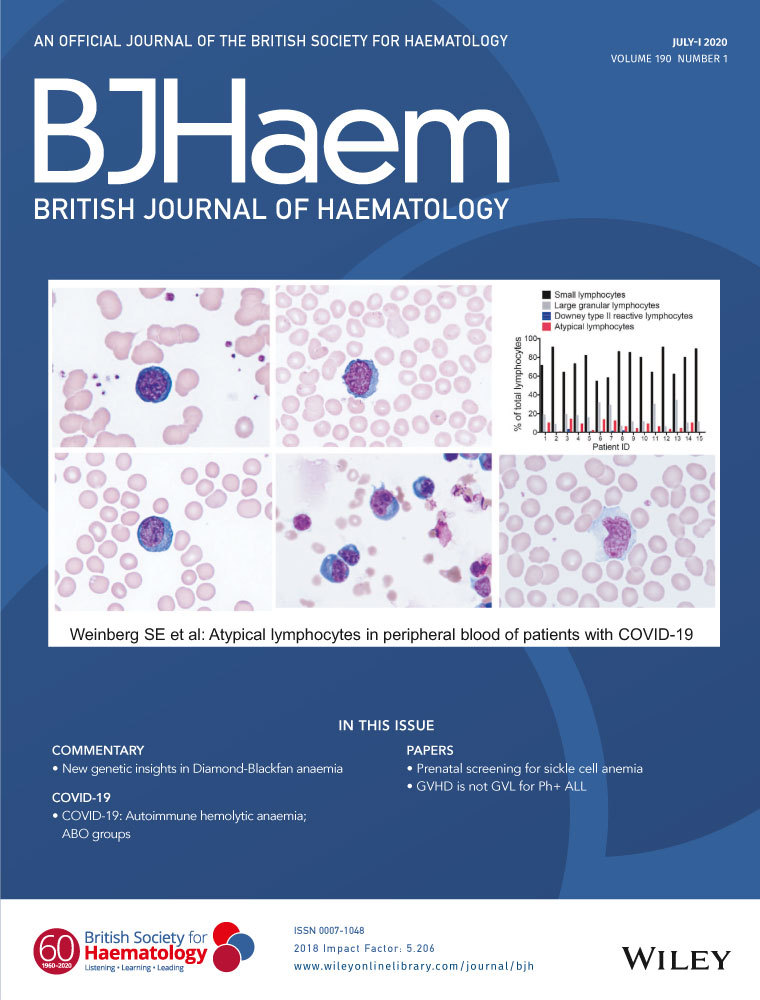A ray of hope in a dire situation: Radiotherapy for progression after chimeric antigen receptor T-cell therapy
In this issue of the Journal, Imber et al. (2020) present the first report on the use of radiotherapy (RT) for patients with aggressive non-Hodgkin lymphoma (NHL), the majority of whom had diffuse large B-cell lymphoma (DLBCL), who experienced disease progression following chimeric antigen receptor (CAR) T-cell therapy.
The prognosis of the 30–40% of patients with DLBCL who relapse or have primary refractory disease after first-line chemo-immunotherapy is poor, with a median survival less than one year. Fewer than half of patients with disease relapse are suitable for autologous stem cell transplantation and of those, fewer than half respond to salvage chemotherapy. Second-line chemotherapy has particularly poor outcomes in patients with primary refractory disease, with less than a quarter having an objective response (Friedberg, 2011; Crump et al, 2017).
CAR T-cell therapy is the most important new effective salvage therapy introduced for the treatment of refractory or relapsed (R/R) aggressive NHL in the last two decades. In the last 2 years, two CD19 CAR T-cell products, axicabtagene ciloleucel and tisagenlecleucel, were approved by the USA Food and Drug Administration (FDA), European Medicines Agency (EMA) and National Institute for Health and Care Excellence (NICE), based on results from the pivotal phase II clinical trials, ZUMA-1 and JULIET trials respectively (Locke et al, 2019; Schuster et al, 2019). These studies showed a very impressive initial response rate of 50–80%, but long-term remission is maintained in only 40% of patients, leaving two-thirds of patients in need of further treatment options or facing inevitable death from disease progression (Neelapu et al., 2017; Schuster et al, 2019).
The role of RT with CAR T-cell therapy for lymphoma is evolving. There are several rationales to support the combination, most notably the high response rate to RT in chemoresistant disease, the fact that most relapses occur in previously involved sites and the not-yet-fully-explored immune-modulatory effect that can potentially enhance the efficacy of CAR T-cell therapy.
There are emerging data to suggest that RT can be used as a bridging treatment whilst awaiting CAR T-cell therapy, to holt disease progression, to reduce disease bulk, to potentiate the effect of CAR T cells, to reduce toxicity from CAR T-cell therapy, and to reduce relapse following CAR T-cell therapy (Zhu et al, 2019; LaRiviere et al, 2019; Figura et al, 2019).
The report by Imber et al. is a descriptive retrospective study of early experience of the use of RT after CAR T-cell therapy failure, highlighting RT’s effectiveness for disease control in localised relapse and its palliative effect in more advanced relapse. The authors reviewed 14 patients with aggressive NHL treated with RT following disease progression after CAR T-cell therapy. The overall response rate was high even in this heavily pre-treated population (median four pre-CAR T-cell regimens) with 100% for the six patients with localised relapses (three achieving complete response), compared to 71% in those with advanced stage relapses. It is worth noting that three of the six with localised relapse went on to receive allogeneic stem cell transplant after RT, and remained alive at 7·9, 9·8 and 38·8 months of follow-up. Two patients progressed while on RT in areas outside the RT field. Overall, eight (57%) had disease progression after RT; all at sites outside the RT field, with concurrent in-field-relapse in three. This is consistent with the findings of Figura et al. (2019) that the majority of relapses occur in previously involved sites.
So, how do we use this information in clinical practice? The Imber et al. study is obviously limited by the small numbers, retrospective nature with possibility of selection bias, and heterogeneity of RT dose and fractionation, which were chosen based on the clinical scenario. Nevertheless, it sheds some light on what to expect using RT after CAR T-cell therapy failure. For those with localised relapse, it seems reasonable to offer RT with a more definitive dose, aiming at inducing remission. Half of the patients in this group achieved a complete response. Additionally, a remission in this situation may open the door again for further consolidation treatments particularly those based on immunological mechanisms, e.g. allogeneic stem cell transplantation, checkpoint inhibitors or re-treatment with CAR T-cell therapy (Twyman-Saint Victor et al., 2015; Chow et al., 2019). On the other hand, those with advanced-stage relapse may be treated with a lower dose to achieve palliative and symptomatic control or to achieve some debulking if other systemic options could be considered.
The role of RT with CAR T-cell therapy will continue to evolve. The evidence to date suggests that bridging with RT prior to CAR T-cell therapy is feasible and safe, and may reduce toxicity without adversely affecting outcomes. In addition, RT may be used to reduce recurrence in patients with high risk of local relapse. The Imber et al. paper highlights the possibility of response and remission with RT after relapse following CAR T-cell therapy.
However, many questions remain to be answered. What is the optimal time to integrate RT; as bridging, as consolidation after successful CAR T-cell therapy or as salvage treatment after relapse? What is the optimal volume, dose and fractionation of RT? Studies examining the interaction of the RT immunomodulatory effect and CAR T-cell therapy will also be very important. For now, the use of therapeutic X-rays continues to offer a ray of hope when there is no other option in sight.




